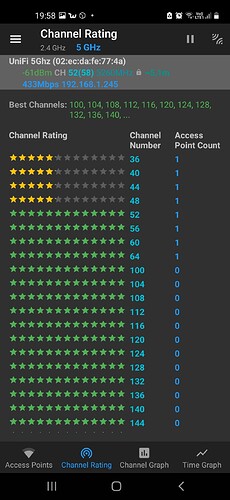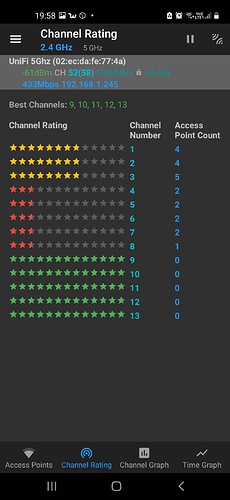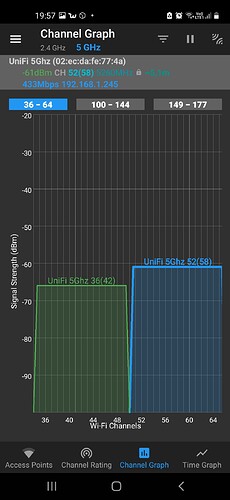I've had nothing but trouble with Unifi so that's the reason why I got the R8000 in the first place, the signal strenght on the R8000 far outperforms the two unifi AC AP pro's both in terms of range and speed.
It's a hideous router looking like some alien spaceship so I prefer the AP's in terms of looks but the performance on those buggers are quite bad to be honest.
I was recommended the R8000 for performance and price reasons, unfortunately I got a deal on the R8000 so I can't return it, I also got another one coming my way from ebay o.o I guess I jumped the ship too quickly..
I've done some iperf3 tests between hardwired gaming pcs and wireless clients are they're all 200mbps ~ and the reason why I was recommended the R8000 was due to the reason that when my kids are streaming via Steam Link / Parsec or Moonlight we could only do so at 30mpbs bitrate without wireless warning popping up telling us to lower the bitrate, even thought the wireless clients iperf test are capable of 200mbps, I'm litterally at my wits end - the performance and signal strenght via the R8000 is faster and stronger than via unifi's APs but I'm still limited at 30mpbs streams.. bufferbloat tests are better with the R8000 than unifi but I'm still having issues..
What can I do to improve the situation for my kids so they can play lagfree and @ 50mpbs per stream? according to all tests via iperf3 it should be possible..
SQM enabled R8000 just drops my download speed tenfold..
I'm using 5Ghz on the wireless clients, speedtests are all above 250mb up and down, iperf test are above 200mpbs..
The wifi setup is stock OpenWrt with a password setup, the 5ghz band is 80Mhz and 2.4ghz band 20Mhz..
Should I change the 5ghz band to 40Mhz and why? does that improve the performance? and whats DSCP?
Following the above advice to return the R8000 which I can't do, should I still reflash it to factory settings, use that along with the other R8000 that's incoming and buy a rpi4 and use openwrt on that?
Rule out the unifi because I've had enough of it, its too complicated and I've had 2 years of troubles with it.. Im hoping the resell value is good so I can recoup some loss buying the R8000..
and whats DSCP, what does it do? and how do I enable it?
I have 4x hardwired gaming pcs and several wireless clients - I want these to be able to use the bandwidth they're capable off.
Thanks for all the help so far! I'm trying to digest it!




